Applications
Existing and potential applications of semilimes
1. Remote access and monitoring of home automation and home security systems
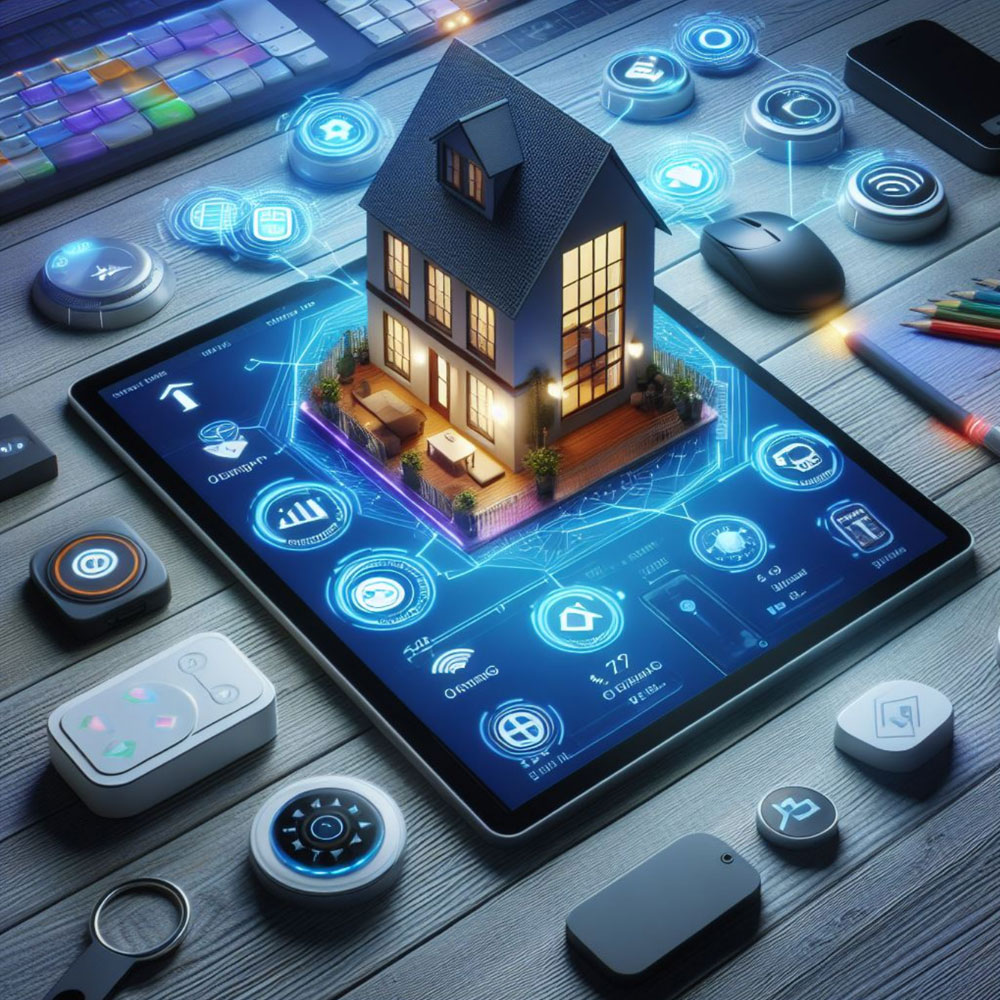 Remote access and monitoring of home automation and security systems represent a significant advancement in the way we interact with our living spaces. This technology allows individuals to control and observe their home environments from any location with internet connectivity. The essence of this innovation lies in its ability to provide convenience, efficiency, and peace of mind.
Remote access and monitoring of home automation and security systems represent a significant advancement in the way we interact with our living spaces. This technology allows individuals to control and observe their home environments from any location with internet connectivity. The essence of this innovation lies in its ability to provide convenience, efficiency, and peace of mind.With remote access, homeowners can adjust lighting, climate, and entertainment systems with a simple tap on their smartphones or voice command. This not only enhances comfort but also contributes to energy conservation by allowing precise control over home utilities, leading to reduced consumption and lower utility bills.
Monitoring capabilities extend this convenience to security. Cameras and sensors can be checked in real-time, alerts can be set up for unusual activities, and emergency services can be notified automatically. This proactive approach to security ensures that one’s home is protected even when physically absent.
Furthermore, this technology fosters independence for those with mobility challenges, granting them the ability to manage their environment without physical constraints. It also supports the growing trend of smart cities, integrating personal spaces into a larger network of efficient and responsive urban living.
In essence, remote access and monitoring systems are reshaping our domestic lives, offering a blend of convenience, security, and smart resource management, ultimately leading to homes that are not just shelters, but active, adaptive, and secure living spaces.
2. Management of mobile workers, such as security staff, service technicians, home delivery
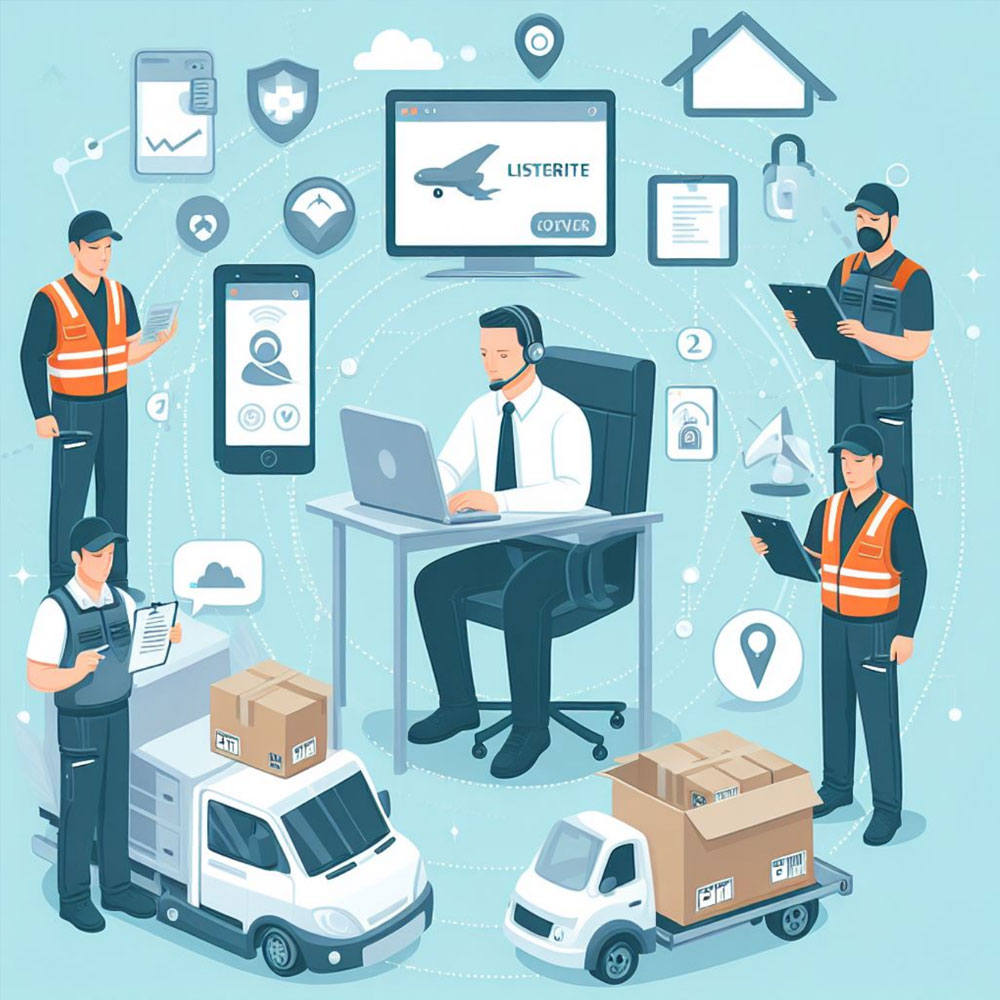 The management of mobile workers encompasses the strategies and practices employed to oversee and optimize the performance of employees who operate outside of a traditional office setting. This includes security staff, service technicians, and home delivery personnel, among others. Effective management in this context requires a blend of technological tools and interpersonal skills to ensure that remote employees are productive, engaged, and delivering quality service. For security staff, management involves real-time communication and monitoring systems to coordinate patrols and respond to incidents. Service technicians require scheduling software for efficient route planning and job tracking. Home delivery workers depend on logistics platforms to manage orders and navigate delivery routes. Across all these roles, mobile worker management must prioritize safety, efficiency, and customer satisfaction.
The management of mobile workers encompasses the strategies and practices employed to oversee and optimize the performance of employees who operate outside of a traditional office setting. This includes security staff, service technicians, and home delivery personnel, among others. Effective management in this context requires a blend of technological tools and interpersonal skills to ensure that remote employees are productive, engaged, and delivering quality service. For security staff, management involves real-time communication and monitoring systems to coordinate patrols and respond to incidents. Service technicians require scheduling software for efficient route planning and job tracking. Home delivery workers depend on logistics platforms to manage orders and navigate delivery routes. Across all these roles, mobile worker management must prioritize safety, efficiency, and customer satisfaction.Moreover, the human element of management is crucial. Regular check-ins, feedback, and support help maintain morale and foster a sense of belonging. Training and development opportunities ensure that mobile workers are skilled and confident in their roles. Ultimately, managing mobile workers effectively means leveraging technology to facilitate operations while nurturing a positive work culture that values and supports each individual’s contribution to the organization’s success.
3. Elderly and patient monitoring
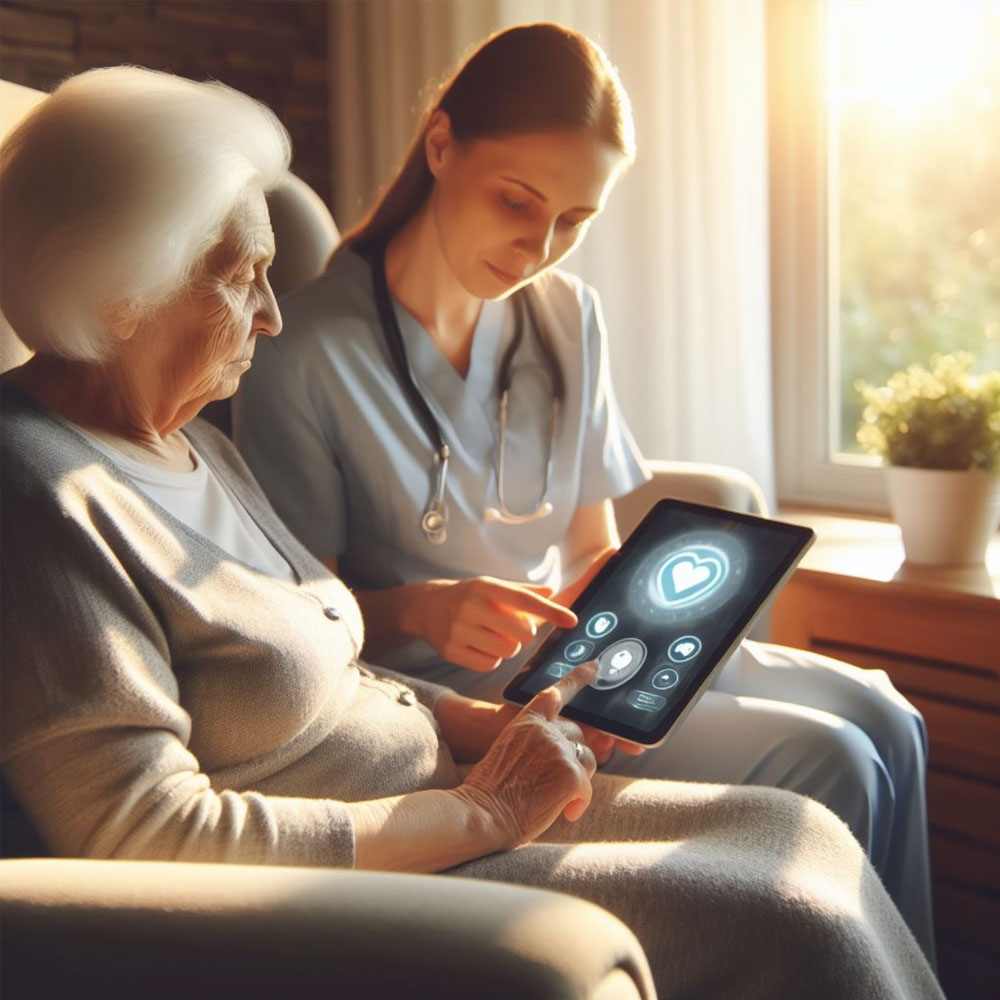 Elderly and patient monitoring is a critical aspect of healthcare that ensures the well-being and safety of individuals who require constant care. With the aging population growing, the need for effective monitoring systems has become increasingly important. These systems provide caregivers and medical professionals with real-time data on patients’ health status, allowing for timely interventions and improved health outcomes.
Elderly and patient monitoring is a critical aspect of healthcare that ensures the well-being and safety of individuals who require constant care. With the aging population growing, the need for effective monitoring systems has become increasingly important. These systems provide caregivers and medical professionals with real-time data on patients’ health status, allowing for timely interventions and improved health outcomes.Monitoring technologies range from wearable devices that track vital signs to advanced home monitoring systems that alert caregivers to potential issues. For the elderly, especially those living alone or with chronic conditions, these tools can be life-saving. They offer peace of mind to both the patients and their families, knowing that help is readily available in case of emergencies.
Furthermore, patient monitoring extends beyond physical health. It encompasses mental and emotional well-being, too. Social interaction and cognitive engagement are facilitated through technology, helping to combat loneliness and isolation. In essence, elderly and patient monitoring represent a blend of compassion and innovation, where cutting-edge technology meets the tender care of human touch, ensuring that our most vulnerable populations are not left behind in our fast-paced world.
4. Sensor hubs and gateways for industrial IoT and Edge Computing
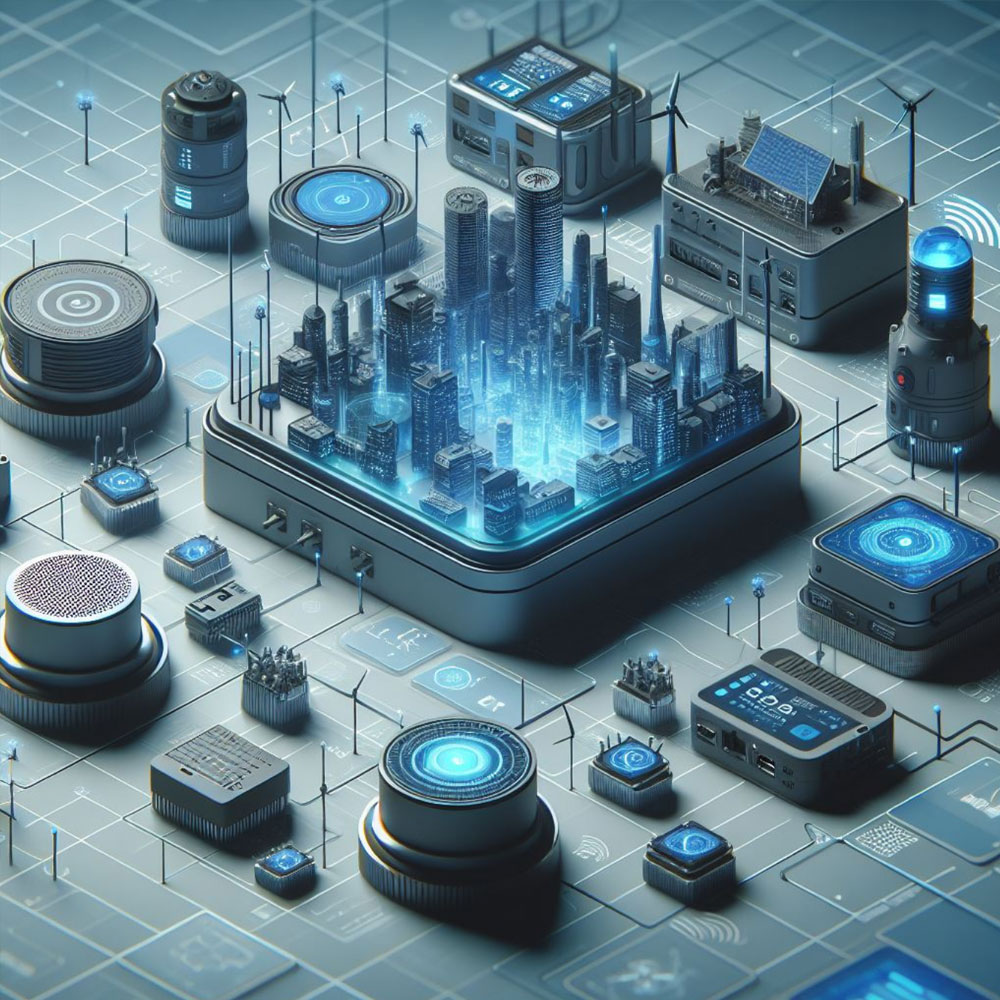 Sensor hubs and gateways are pivotal components in the architecture of Industrial Internet of Things (IIoT) and Edge Computing. They serve as critical nodes that collect, process, and transmit data from a myriad of sensors deployed across various industrial settings. These hubs and gateways enable real-time data analysis at the edge of the network, reducing latency and bandwidth use by processing data locally before sending it to the cloud or a central data center.
Sensor hubs and gateways are pivotal components in the architecture of Industrial Internet of Things (IIoT) and Edge Computing. They serve as critical nodes that collect, process, and transmit data from a myriad of sensors deployed across various industrial settings. These hubs and gateways enable real-time data analysis at the edge of the network, reducing latency and bandwidth use by processing data locally before sending it to the cloud or a central data center.In the context of IIoT, sensor hubs aggregate data from sensors monitoring machinery, environmental conditions, and operational parameters. This data is essential for predictive maintenance, process optimization, and safety enhancements. Gateways, on the other hand, act as intermediaries that facilitate communication between different network protocols and manage data flow to and from the cloud.
The integration of sensor hubs and gateways in industrial settings leads to smarter, more autonomous systems capable of making decisions at the edge. This decentralization of data processing powers advanced applications like autonomous robots, smart grids, and intelligent transportation systems. As industries continue to embrace digital transformation, the role of sensor hubs and gateways in enabling efficient, responsive, and adaptive systems becomes increasingly significant, heralding a new era of industrial automation and innovation.
5. Telecommunications gateways and fleet management solutions
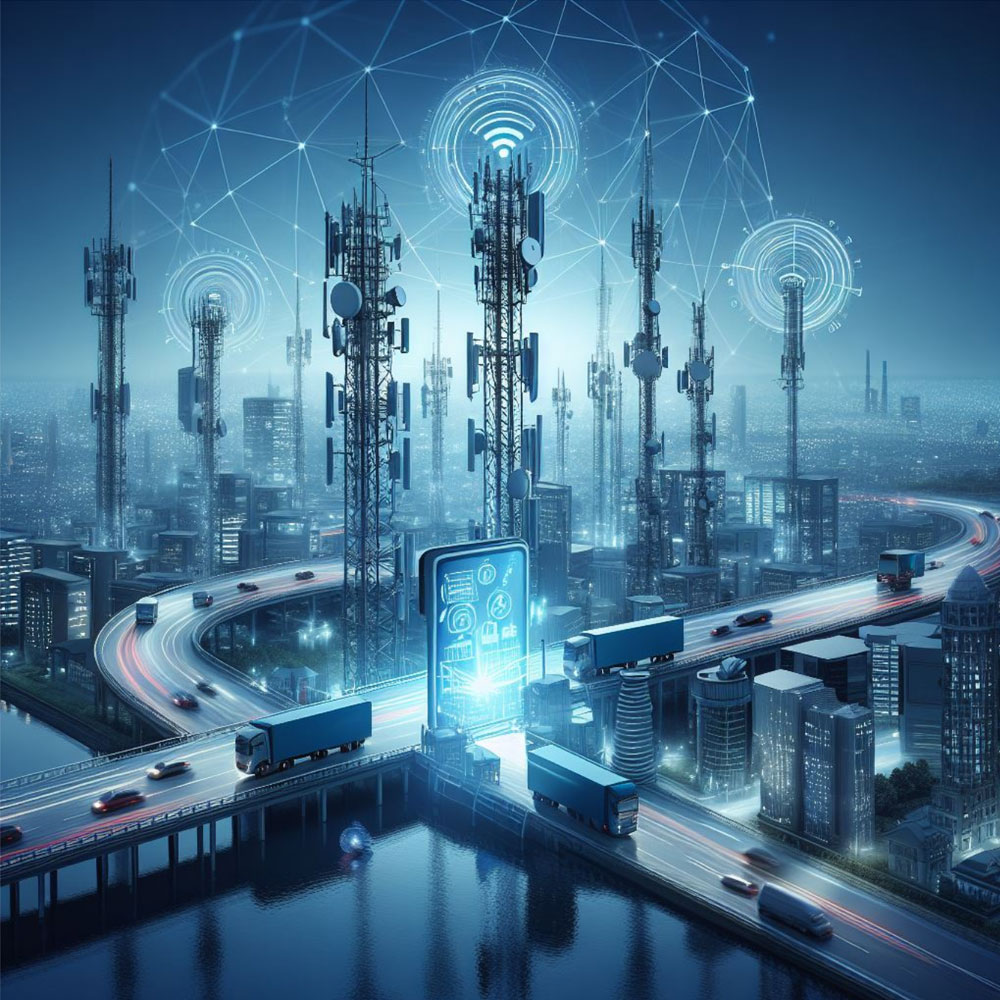 Telecommunications gateways are integral to modern fleet management solutions, acting as the bridge between vehicles and the central command center. These gateways facilitate the seamless flow of data, enabling real-time tracking, diagnostics, and communication with the fleet. They convert various protocols from the vehicles’ onboard systems into a standardized format that can be analyzed and acted upon.
Telecommunications gateways are integral to modern fleet management solutions, acting as the bridge between vehicles and the central command center. These gateways facilitate the seamless flow of data, enabling real-time tracking, diagnostics, and communication with the fleet. They convert various protocols from the vehicles’ onboard systems into a standardized format that can be analyzed and acted upon.Fleet management solutions leverage these gateways to optimize routes, monitor vehicle health, and ensure driver safety. By analyzing the data collected, fleet managers can make informed decisions to reduce operational costs, improve efficiency, and enhance service delivery. The ability to remotely diagnose issues or update software adds another layer of efficiency, minimizing downtime and maintenance costs.
Moreover, telecommunications gateways support the integration of additional services such as telematics, which provide detailed insights into driver behavior and vehicle performance. This data is crucial for developing strategies to reduce fuel consumption, manage risks, and comply with regulatory requirements.
In essence, telecommunications gateways are the cornerstone of advanced fleet management solutions. They empower businesses to stay connected with their assets, no matter where they are, leading to smarter, more responsive operations in the fast-paced world of logistics and transportation.
6. Process monitoring, team alerts, team dispatching, and quality control in manufacturing plants
Process monitoring, team alerts, team dispatching, and quality control are essential components of modern manufacturing plants. These elements work in concert to ensure that production lines operate smoothly, efficiently, and without compromise to product quality.
Process monitoring is the continuous oversight of manufacturing operations. It involves tracking the performance of machinery, the flow of materials, and the activities of workers. Sensors and software systems collect data that can be analyzed to detect anomalies, predict failures, and facilitate proactive maintenance.
Team alerts are automated notifications that inform relevant personnel about critical events or changes in the production process. These can range from machinery malfunctions to deviations in product specifications, ensuring that issues are addressed promptly to minimize downtime and waste.
Team dispatching refers to the organized deployment of workers in response to the needs of the plant. Whether it’s routine tasks or emergency interventions, an effective dispatch system ensures that the right people with the right skills are sent to the right place at the right time.
Quality control is the cornerstone of manufacturing, involving various checks and measures to maintain product standards. It encompasses everything from initial design to final inspection, ensuring that every item meets the stringent criteria set by the company and regulatory bodies.
Together, these four pillars support a robust manufacturing ecosystem that prioritizes efficiency, safety, and excellence. As technology advances, the integration of AI and machine learning will further enhance these processes, leading to even greater optimization and quality assurance in manufacturing plants.
Process monitoring is the continuous oversight of manufacturing operations. It involves tracking the performance of machinery, the flow of materials, and the activities of workers. Sensors and software systems collect data that can be analyzed to detect anomalies, predict failures, and facilitate proactive maintenance.
Team alerts are automated notifications that inform relevant personnel about critical events or changes in the production process. These can range from machinery malfunctions to deviations in product specifications, ensuring that issues are addressed promptly to minimize downtime and waste.
Team dispatching refers to the organized deployment of workers in response to the needs of the plant. Whether it’s routine tasks or emergency interventions, an effective dispatch system ensures that the right people with the right skills are sent to the right place at the right time.
Quality control is the cornerstone of manufacturing, involving various checks and measures to maintain product standards. It encompasses everything from initial design to final inspection, ensuring that every item meets the stringent criteria set by the company and regulatory bodies.
Together, these four pillars support a robust manufacturing ecosystem that prioritizes efficiency, safety, and excellence. As technology advances, the integration of AI and machine learning will further enhance these processes, leading to even greater optimization and quality assurance in manufacturing plants.
7. Remote control and monitoring of scientific instruments and laboratory equipment
Remote control and monitoring of scientific instruments and laboratory equipment are revolutionizing the way research is conducted. This technology allows scientists to operate equipment and conduct experiments from anywhere in the world, breaking down geographical barriers and enabling collaboration across continents.
The ability to remotely control instruments means that specialized equipment can be shared more efficiently, reducing costs and increasing access to cutting-edge technology. Monitoring systems ensure that experiments run smoothly, with sensors providing real-time data on critical variables such as temperature, pressure, and chemical concentrations. This data can be used to make adjustments on the fly, optimize experimental conditions, and even automate entire processes.
Moreover, remote monitoring enhances safety in the laboratory. Hazardous conditions can be detected early, and corrective actions can be taken without putting personnel at risk. It also allows for continuous operation, even when the lab is unstaffed, maximizing productivity and accelerating the pace of scientific discovery.
In summary, remote control and monitoring are transforming laboratories into smarter, safer, and more collaborative spaces. As these technologies continue to advance, they will unlock new possibilities for scientific exploration and innovation.
The ability to remotely control instruments means that specialized equipment can be shared more efficiently, reducing costs and increasing access to cutting-edge technology. Monitoring systems ensure that experiments run smoothly, with sensors providing real-time data on critical variables such as temperature, pressure, and chemical concentrations. This data can be used to make adjustments on the fly, optimize experimental conditions, and even automate entire processes.
Moreover, remote monitoring enhances safety in the laboratory. Hazardous conditions can be detected early, and corrective actions can be taken without putting personnel at risk. It also allows for continuous operation, even when the lab is unstaffed, maximizing productivity and accelerating the pace of scientific discovery.
In summary, remote control and monitoring are transforming laboratories into smarter, safer, and more collaborative spaces. As these technologies continue to advance, they will unlock new possibilities for scientific exploration and innovation.
8. Business promotion and location-based advertisement
Business promotion and location-based advertising are dynamic facets of modern marketing strategies. They leverage the power of geotargeting to deliver relevant advertisements to consumers based on their physical location. This approach enhances the likelihood of reaching an audience with a high intent to purchase, as ads are tailored to local demographics, interests, and behaviors.
Location-based advertising utilizes GPS technology and mobile data to pinpoint a user’s location, allowing businesses to send targeted offers and promotions to potential customers nearby. For instance, a restaurant can send special lunch deals to users within a certain radius during lunch hours, effectively driving foot traffic.
This method of promotion is highly effective due to its personalized nature. It considers the context of the consumer’s location, making the ads more pertinent and engaging. Moreover, it provides valuable analytics, enabling businesses to measure the impact of their campaigns and optimize accordingly.
In summary, business promotion through location-based advertising represents a strategic convergence of technology and marketing. It offers businesses a sophisticated tool to increase visibility, attract local customers, and ultimately drive sales, while providing consumers with timely, relevant, and convenient offers.
Location-based advertising utilizes GPS technology and mobile data to pinpoint a user’s location, allowing businesses to send targeted offers and promotions to potential customers nearby. For instance, a restaurant can send special lunch deals to users within a certain radius during lunch hours, effectively driving foot traffic.
This method of promotion is highly effective due to its personalized nature. It considers the context of the consumer’s location, making the ads more pertinent and engaging. Moreover, it provides valuable analytics, enabling businesses to measure the impact of their campaigns and optimize accordingly.
In summary, business promotion through location-based advertising represents a strategic convergence of technology and marketing. It offers businesses a sophisticated tool to increase visibility, attract local customers, and ultimately drive sales, while providing consumers with timely, relevant, and convenient offers.
9. Real estate management and real estate information management
Real estate management and real estate information management are key aspects of the property industry, focusing on the operation, control, and oversight of real estate. Real estate management involves the day-to-day activities associated with managing properties, such as maintenance, tenant relations, and financial operations. It ensures that the properties are well-maintained, legally compliant, and financially profitable.
Real estate information management, on the other hand, deals with the organization and analysis of data related to properties. This includes sales data, property values, market trends, and demographic information. Effective information management aids in making informed decisions about property investments, development, and portfolio management.
Both realms are increasingly relying on technology to improve efficiency and accuracy. Software solutions for property management help streamline operations, automate tasks, and provide better service to tenants. Similarly, advanced data analytics tools in information management enable deeper insights into market dynamics and investment opportunities.
In essence, real estate management ensures the smooth operation of properties, while real estate information management provides the data-driven foundation for strategic decision-making in the real estate market. Together, they form the backbone of a thriving real estate sector, adapting to the digital age with innovative tools and strategies.
Real estate information management, on the other hand, deals with the organization and analysis of data related to properties. This includes sales data, property values, market trends, and demographic information. Effective information management aids in making informed decisions about property investments, development, and portfolio management.
Both realms are increasingly relying on technology to improve efficiency and accuracy. Software solutions for property management help streamline operations, automate tasks, and provide better service to tenants. Similarly, advanced data analytics tools in information management enable deeper insights into market dynamics and investment opportunities.
In essence, real estate management ensures the smooth operation of properties, while real estate information management provides the data-driven foundation for strategic decision-making in the real estate market. Together, they form the backbone of a thriving real estate sector, adapting to the digital age with innovative tools and strategies.
10. Shared mobility and travel planning
Shared mobility and travel planning are transforming the way we navigate urban environments. This paradigm shift is driven by the need for more sustainable and efficient transportation options. Shared mobility refers to the shared use of vehicles, bicycles, or other modes of transport, typically facilitated by a digital platform. It includes services like car-sharing, bike-sharing, and ride-hailing.
Travel planning, especially when integrated with shared mobility services, becomes a seamless experience. Commuters can plan their journeys using apps that combine public transport with shared mobility options, providing a door-to-door travel itinerary. This multimodal approach optimizes routes, reduces travel time, and often proves to be more cost-effective.
The benefits of shared mobility and integrated travel planning are manifold. They reduce the reliance on private car ownership, thereby decreasing traffic congestion and pollution. They also offer flexibility and convenience to users, who can choose the best mode of transport for each trip segment.
In conclusion, shared mobility and travel planning are at the forefront of urban transport innovation. They not only enhance the individual’s travel experience but also contribute to the broader goals of reducing urban congestion, promoting sustainability, and building smarter cities. As technology advances, these services will become even more interconnected, further revolutionizing the way we move.
Travel planning, especially when integrated with shared mobility services, becomes a seamless experience. Commuters can plan their journeys using apps that combine public transport with shared mobility options, providing a door-to-door travel itinerary. This multimodal approach optimizes routes, reduces travel time, and often proves to be more cost-effective.
The benefits of shared mobility and integrated travel planning are manifold. They reduce the reliance on private car ownership, thereby decreasing traffic congestion and pollution. They also offer flexibility and convenience to users, who can choose the best mode of transport for each trip segment.
In conclusion, shared mobility and travel planning are at the forefront of urban transport innovation. They not only enhance the individual’s travel experience but also contribute to the broader goals of reducing urban congestion, promoting sustainability, and building smarter cities. As technology advances, these services will become even more interconnected, further revolutionizing the way we move.
11. Food ordering and delivery services
Food ordering and delivery services have revolutionized the dining experience, offering unparalleled convenience and variety to consumers. These services enable customers to order from a wide range of restaurants with just a few clicks on their smartphones or computers. The integration of technology into the food service industry has not only streamlined the ordering process but also enhanced the efficiency of delivery.
The rise of dedicated food delivery platforms has expanded the reach of local eateries, allowing them to serve a broader customer base without the need for a physical dine-in space. For consumers, this means access to a diverse array of culinary options, from fast food to gourmet meals, all delivered to their doorstep.- Moreover, these services have created a new economy, providing employment opportunities for delivery personnel and supporting the growth of small and medium-sized restaurants. They also offer features like real-time tracking, customer reviews, and personalized recommendations, further enriching the user experience.
In essence, food ordering and delivery services represent a significant shift in how we access and enjoy food. They cater to the fast-paced lifestyle of modern society, where convenience and time-saving are highly valued. As these services continue to evolve, they will likely play an even more prominent role in our daily lives, shaping the future of the food industry.
The rise of dedicated food delivery platforms has expanded the reach of local eateries, allowing them to serve a broader customer base without the need for a physical dine-in space. For consumers, this means access to a diverse array of culinary options, from fast food to gourmet meals, all delivered to their doorstep.- Moreover, these services have created a new economy, providing employment opportunities for delivery personnel and supporting the growth of small and medium-sized restaurants. They also offer features like real-time tracking, customer reviews, and personalized recommendations, further enriching the user experience.
In essence, food ordering and delivery services represent a significant shift in how we access and enjoy food. They cater to the fast-paced lifestyle of modern society, where convenience and time-saving are highly valued. As these services continue to evolve, they will likely play an even more prominent role in our daily lives, shaping the future of the food industry.
12. Mobile interfaces to ERPs and CRMs
Mobile interfaces to Enterprise Resource Planning (ERP) and Customer Relationship Management (CRM) systems are a testament to the evolving landscape of business technology. These interfaces allow users to access complex business applications from their smartphones or tablets, providing the flexibility to manage business operations and customer interactions on the go.
With mobile ERP and CRM interfaces, employees can stay connected to their company’s core business processes, such as inventory management, sales, and customer service, regardless of their location. This mobility enhances productivity, as tasks that once required a desktop computer can now be performed anywhere, at any time.
For sales professionals, mobile CRMs are particularly transformative. They can update client records, schedule meetings, and follow up on leads while in the field, ensuring that customer data is always current and accessible. This real-time access to information can significantly improve customer satisfaction and response times.
In conclusion, mobile interfaces for ERPs and CRMs represent a significant shift towards more agile and responsive business operations. They empower organizations to break free from the constraints of the office, fostering a more dynamic and efficient workforce that can adapt to the fast-paced demands of the modern business environment.
With mobile ERP and CRM interfaces, employees can stay connected to their company’s core business processes, such as inventory management, sales, and customer service, regardless of their location. This mobility enhances productivity, as tasks that once required a desktop computer can now be performed anywhere, at any time.
For sales professionals, mobile CRMs are particularly transformative. They can update client records, schedule meetings, and follow up on leads while in the field, ensuring that customer data is always current and accessible. This real-time access to information can significantly improve customer satisfaction and response times.
In conclusion, mobile interfaces for ERPs and CRMs represent a significant shift towards more agile and responsive business operations. They empower organizations to break free from the constraints of the office, fostering a more dynamic and efficient workforce that can adapt to the fast-paced demands of the modern business environment.
13. Employee and team assessments and training
Employee and team assessments and training are vital processes within any organization, aimed at enhancing performance and fostering professional development. Assessments provide valuable insights into an individual’s skills, strengths, and areas for improvement. They can take various forms, including performance reviews, 360-degree feedback, and skill-specific tests. These evaluations help managers understand how each team member contributes to the company’s goals and where additional support might be needed.
Training programs are then tailored based on these assessments to address any skill gaps or to advance employees’ expertise. Effective training is often interactive and continuous, incorporating both on-the-job experiences and formal learning sessions. It can cover a wide range of topics, from technical skills to leadership and communication.
Moreover, team assessments and training are not just about correcting weaknesses but also about recognizing and leveraging strengths. They can lead to better team dynamics, as understanding each other’s working styles and capabilities allows for more effective collaboration.
In essence, regular assessments and targeted training are essential for maintaining a skilled, competent, and motivated workforce. They are investments in human capital that pay dividends in the form of higher productivity, innovation, and employee satisfaction, ultimately contributing to the organization’s success.
Training programs are then tailored based on these assessments to address any skill gaps or to advance employees’ expertise. Effective training is often interactive and continuous, incorporating both on-the-job experiences and formal learning sessions. It can cover a wide range of topics, from technical skills to leadership and communication.
Moreover, team assessments and training are not just about correcting weaknesses but also about recognizing and leveraging strengths. They can lead to better team dynamics, as understanding each other’s working styles and capabilities allows for more effective collaboration.
In essence, regular assessments and targeted training are essential for maintaining a skilled, competent, and motivated workforce. They are investments in human capital that pay dividends in the form of higher productivity, innovation, and employee satisfaction, ultimately contributing to the organization’s success.
14. Location based outdoor gaming, city promotion and treasure hunt
Location-based outdoor gaming, city promotion, and treasure hunts represent an engaging intersection of entertainment, exploration, and education. These activities use geolocation technology to create immersive experiences that encourage participants to discover new places and learn about their surroundings.
In location-based outdoor games, players navigate to specific GPS coordinates to complete tasks or find virtual items. This not only promotes physical activity but also adds a layer of excitement to the gaming experience. Cities have leveraged these games to attract tourists, showcasing landmarks and hidden gems through interactive challenges.
Treasure hunts, a timeless pursuit, have been modernized with digital tools. Participants follow clues and solve puzzles that lead them through urban landscapes, uncovering stories and history along the way. This gamification of city exploration serves as a unique promotional tool, engaging both locals and visitors in a memorable adventure.
These activities also offer educational value, often incorporating historical facts and cultural insights into the gameplay. They foster community engagement and social interaction, as players work together or compete in friendly rivalry.
In summary, location-based outdoor gaming, city promotion, and treasure hunts are innovative ways to blend technology with real-world exploration. They provide a fun platform for discovery, exercise, and learning, enriching our interaction with the spaces we inhabit.
In location-based outdoor games, players navigate to specific GPS coordinates to complete tasks or find virtual items. This not only promotes physical activity but also adds a layer of excitement to the gaming experience. Cities have leveraged these games to attract tourists, showcasing landmarks and hidden gems through interactive challenges.
Treasure hunts, a timeless pursuit, have been modernized with digital tools. Participants follow clues and solve puzzles that lead them through urban landscapes, uncovering stories and history along the way. This gamification of city exploration serves as a unique promotional tool, engaging both locals and visitors in a memorable adventure.
These activities also offer educational value, often incorporating historical facts and cultural insights into the gameplay. They foster community engagement and social interaction, as players work together or compete in friendly rivalry.
In summary, location-based outdoor gaming, city promotion, and treasure hunts are innovative ways to blend technology with real-world exploration. They provide a fun platform for discovery, exercise, and learning, enriching our interaction with the spaces we inhabit.
15. Distributed real-time leads capturing
Focus on the value of your event by saving backoffice time and avoid forgetting precious information.
The Leads Capture semilimes recipe empowers your and your team’s semilimes experience to quickly set up a cheap and fully customizable solution for collecting, processing and storing your contacts’ details during events/exhibitions, straight on your mobile phones.
Discover our demo project on our github page
The Leads Capture semilimes recipe empowers your and your team’s semilimes experience to quickly set up a cheap and fully customizable solution for collecting, processing and storing your contacts’ details during events/exhibitions, straight on your mobile phones.
Discover our demo project on our github page
16. Fully configurable booking service
Discover how quick and easy is to book visits, meeting rooms, sell event seats, rent cars, and so on… with no need for dedicated frameworks or custom development. Install, configure your environment, get paid for your services.
The Booking Service semilimes recipe takes advantage of the semilimes platform services to setup any kind of bookable items over time, integrate your preferred payment service and book/sell your items. All on your mobile phones.
Discover our demo project on our github page
The Booking Service semilimes recipe takes advantage of the semilimes platform services to setup any kind of bookable items over time, integrate your preferred payment service and book/sell your items. All on your mobile phones.
Discover our demo project on our github page